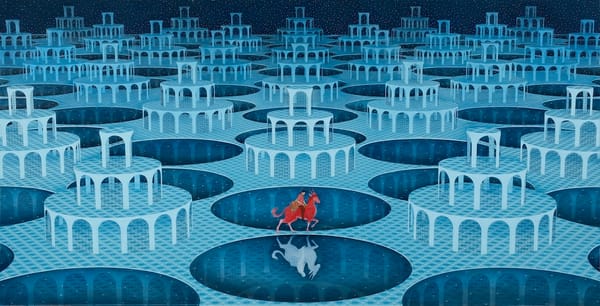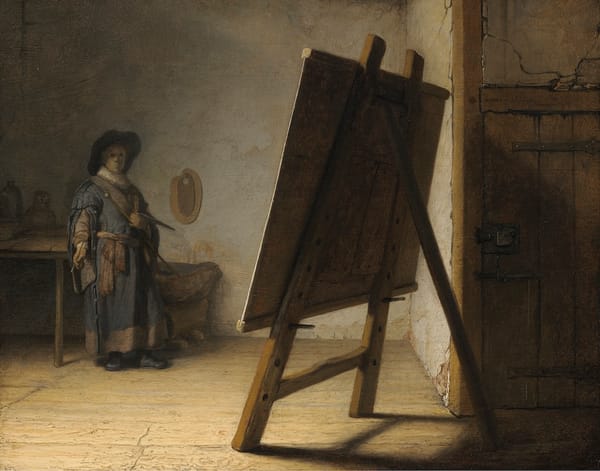What does an art conservationist do?
Art conservationists preserve cultural heritage through assessment, restoration, and preventive care. They ensure that artworks and artifacts remain intact for future generations, blending science, art, and history in their meticulous work.

Art conservation is a delicate and essential practice in the world of fine arts and cultural heritage. It's a discipline that combines science, art, and history to preserve and restore artworks and artefacts. As art ages, it undergoes natural deterioration due to environmental factors, handling, or simply the passage of time. Art conservationists step in to address these issues, ensuring that works of art remain intact for future generations to enjoy and study. But what exactly does an art conservationist do, and why is their work so vital? This essay explores the role of art conservationists and the significance of their work in maintaining the legacy of artistic and cultural treasures.
The Role of an Art Conservationist
Art conservationists are professionals trained in the science and techniques of preserving and restoring art. They work with a variety of materials, including paintings, sculptures, textiles, manuscripts, and more. Their primary objective is to prevent further damage to artworks while maintaining their original integrity and character. This requires a deep understanding of art history, chemistry, materials science, and the artistic techniques used in the creation of various works.
The role of an art conservationist involves several key responsibilities:
- Assessment and Analysis: Before any preservation or restoration work can begin, conservationists must assess the condition of the artwork. This involves examining the piece for signs of deterioration, such as cracks, fading, discolouration, or physical damage. Conservationists use a range of scientific tools and techniques, such as X-rays, ultraviolet light, and infrared imaging, to analyze the underlying structure of the artwork and identify hidden issues.
- Restoration and Repair: Once the assessment is complete, conservationists determine the best course of action for restoration or repair. This process requires a delicate balance between restoring the artwork's appearance and maintaining its historical authenticity. Conservationists use a variety of methods, such as cleaning, retouching, and reconstructing damaged areas, to bring the artwork back to its original state. However, these interventions must be reversible to allow for future treatment if needed.
- Preservation and Preventive Care: Beyond restoration, conservationists focus on preventive measures to protect artworks from further damage. This can include controlling environmental factors like temperature, humidity, and light exposure, as well as implementing proper storage and handling techniques. Conservationists may also design custom framing or display solutions to ensure the long-term safety of the artwork.
- Research and Documentation: A crucial aspect of art conservation is research. Conservationists delve into the history of the artwork, exploring its origin, the materials used, and the context in which it was created. This research informs the restoration process and helps conservationists make informed decisions. Additionally, conservationists meticulously document their findings, creating detailed records of the artwork's condition, the treatment applied, and any changes made during restoration.
- Collaboration and Consultation: Art conservationists often work closely with other professionals in the art world, including museum curators, art historians, archaeologists, and architects. They provide expert advice on preservation strategies, exhibition planning, and transportation of artworks. This collaborative approach ensures that the artwork is handled with the utmost care and expertise.
- Education and Advocacy: Art conservationists play a significant role in educating the public about the importance of art preservation. They may conduct workshops, give lectures, or engage in outreach programs to raise awareness about the challenges and techniques involved in art conservation. Through their advocacy, conservationists contribute to the broader conversation about cultural heritage and its preservation.
The Importance of Art Conservation
Art conservation is a critical field because it helps preserve cultural heritage for future generations. Artworks and artefacts carry historical, social, and emotional significance, providing insights into the past and serving as touchstones for identity and culture. By preserving these objects, conservationists ensure that they remain accessible to scholars, artists, and the general public.
Moreover, art conservation is vital for maintaining the market value of artworks. Collectors and museums often rely on conservationists to ensure that their collections are kept in pristine condition, which can significantly impact their value. By maintaining the integrity of the artwork, conservationists contribute to the sustainability of the art market.
Art conservation also plays a role in supporting artistic creativity and innovation. By studying and preserving artworks, conservationists contribute to the body of knowledge that artists and art historians can draw upon for inspiration and research. This knowledge, in turn, helps drive new artistic movements and ideas.
Challenges and Ethical Considerations in Art Conservation
Despite its importance, art conservation is not without its challenges and ethical considerations. Conservationists must carefully balance the need for restoration with the desire to maintain the original character of the artwork. Excessive or inappropriate restoration can lead to the loss of historical authenticity, which can undermine the value and significance of the piece.
Ethical considerations also play a role in the choice of restoration techniques. Conservationists must ensure that their interventions are reversible and do not cause further damage to the artwork. This requires a deep understanding of the materials and methods used in the restoration process.
Additionally, conservationists must navigate the evolving landscape of technology and science. New tools and techniques continue to emerge, allowing for more accurate assessments and less invasive restoration methods. Conservationists must stay up to date with these advancements to provide the best possible care for artworks.
Conclusion
Art conservationists are the guardians of cultural heritage, ensuring that artworks and artefacts are preserved and restored for future generations. Through their expertise in science, art, and history, conservationists play a crucial role in maintaining the legacy of artistic and cultural treasures. Their work involves assessment, restoration, preservation, research, collaboration, and education. Despite the challenges and ethical considerations they face, conservationists are dedicated to preserving the beauty and significance of art, allowing it to continue to inspire and educate for years to come.





